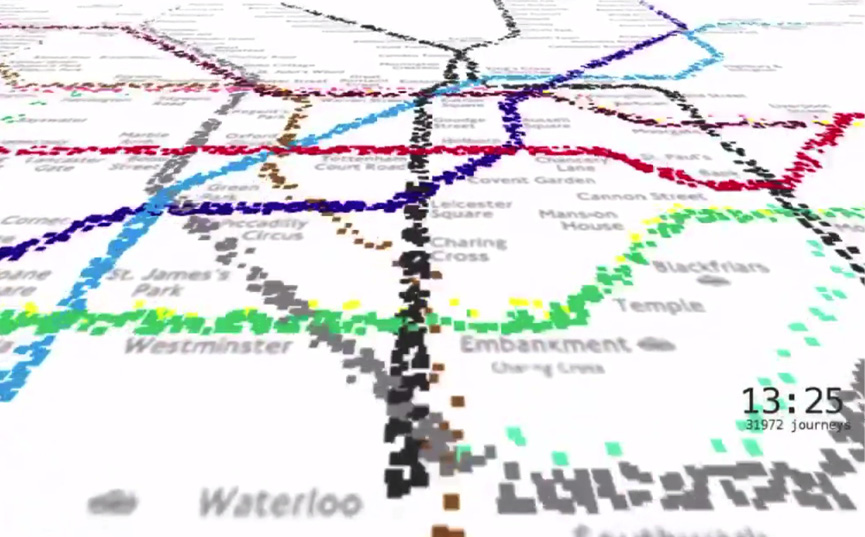The Global Impact of Open Data
United Kingdom's Transport for London
Get set, go!
by Becky Hogge
Reference
1 BBC News. (2015, February 02). London's population hits 8.6m record high. Retrieved from BBC News: http://www.bbc.co.uk/news/uk-england-london-31082941
2 Transport for London. (n.d.). What we do. Retrieved September 30, 2015, from Transport for London: https://tfl.gov.uk/corporate/about-tfl/what-we-do
3 Transport for London. (n.d.). What we do. Retrieved September 30, 2015, from Transport for London: https://tfl.gov.uk/corporate/about-tfl/what-we-do
4 Interview, Vernon Everitt, Managing Director in charge of Customer Experience, Marketing and Communications, TfL
5 Transport for London. (n.d.). How we are funded. Retrieved September 30, 2015, from Transport for London: https://tfl.gov.uk/corporate/about-tfl/how-we-work/how-we-are-funded?
6 Topham, G. (2014, August 13). Open data and driverless buses: how London transport heads to the future. Retrieved from The Guardian: http://www.theguardian.com/uk-news/2014/aug/13/transport-london-tube-bus-oyster-data
7 Reed, S. (2015). Open Data and Bus Apps. Transport for London Customer Group.
8 Transport for London. (n.d.). Transport Data Service terms and conditions. Retrieved September 30, 2015, from Transport for London: https://tfl.gov.uk/corporate/terms-and-conditions/transport-data-service
9 Interview, Phil Young, Head of Online, TfL
10 Siddle, J. (2014, April 10). I Know Where You Were Last Summer: London’s public bike data is telling everyone where you’ve been. Retrieved from The Variable Tree: http://vartree.blogspot.co.uk/2014/04/i-know-where-you-were-last-summer.html
11 Mirani, L. (2014, April 16). London’s bike-share program unwittingly revealed its cyclists’ movements for the world to see. Retrieved from Quartz: http://qz.com/199209/londons-bike-share-program-unwittingly-revealed-its-cyclists-movements-for-the-world-to-see/
12 Interview, Phil Young, Head of Online, TfL
13 The modern version of this area is available here: https://tfl.gov.uk/info-for/open-data-users/
14 Interview, Vernon Everitt, Managing Director in charge of Customer Experience, Marketing and Communications, TfL
15 Private correspondence, Phil Young and Vernon Everitt
16 Interview, Vernon Everitt, Managing Director in charge of Customer Experience, Marketing and Communications, TfL
17 Interview, Paul Clarke, Independent contractor
18 Interview, Emer Coleman, Director (Business Development), Transport API; Director of Digital Projects, Greater London Authority 2009-2011
19 Interview, Phil Young, Head of Online, TfL
20 Interview, Emer Coleman, Director (Business Development), Transport API; Director of Digital Projects, Greater London Authority 2009-2011
21 Everitt, V. (2014). Delivering better customer information through free open data. PTI, 1, pp. 8-11.
22 Reed, S. (2015). Open Data and Bus Apps. Transport for London Customer Group.
23 Reed, S. (2015). Open Data and Bus Apps. Transport for London Customer Group.
24 Deloitte. (2013, May). Market Assessment of Public Sector Information. Retrieved from Department for Business, Innovation and Skills: https://www.gov.uk/government/uploads/system/uploads/attachment_data/file/198905/bis-13-743-market-assessment-of-public-sector-information.pdf
25 Interview, Vernon Everitt, Managing Director in charge of Customer Experience, Marketing and Communications, TfL
26 For more examples, see (CASA blog network n.d.)
27 Transport for London. (2015, May 11). Revolutionary new Santander Cycles App launched. Retrieved from Transport for London: https://tfl.gov.uk/info-for/media/press-releases/2015/may/revolutionary-new-santander-cycles-app-launched
28 Baxevanis, A. (2015, May 13). FOI request: Santander Cycles app. Retrieved from WhatDoTheyKnow: https://www.whatdotheyknow.com/request/santander_cycles_app
29 Interview, Vernon Everitt, Managing Director in charge of Customer Experience, Marketing and Communications, TfL
30 Both Phil Young and Vernon Everitt used this figure in interview, although neither were able to point to a source confirming it.
31 Interview, Vernon Everitt, Managing Director in charge of Customer Experience, Marketing and Communications, TfL
32 Interview, Phil Young, Head of Online, TfL
33 Deloitte. (2013, May). Market Assessment of Public Sector Information. Retrieved from Department for Business, Innovation and Skills: https://www.gov.uk/government/uploads/system/uploads/attachment_data/file/198905/bis-13-743-market-assessment-of-public-sector-information.pdf
34 Starting from the ~4million “reach” figure quoted further up this report, Deloitte estimated:
20/40% (conservative/optimistic) of people who downloaded an app became regular users
Of these, 10/25% (conservative/optimistic) were able to use the app to find an alternative route in the event of a delay
35 The value of the time saved was calculated according to DfT values of leisure/commuting time, not business time—were it calculated according to the latter figure, the overall value of time saved would be much higher.
36 The original HS2 time savings value (£440m/year in 2012 prices) uses a working time value, not leisure time/commuting time as used in the Deloitte study, so Deloitte have switched the values here. Note that Deloitte are careful to make clear that they have not critiqued the HS2 study as part of their analysis. In this, I have followed their lead.
37 Using TfL’s own survey data, Reed calculates that 24% of daily passenger journeys by bus are supported by apps. Based on passengers’ historic willingness to pay 1.44 pence per journey for SMS services where they can receive information about the time of the next bus and any service delays by typing a code shown on the bus stop into their phone, he calculates a value delivered to bus passengers of £8.3m per year (being the amount of money saved by bus users now they can get the same information for free). This analysis is interesting not least because it puts a figure on the annual running (opex) costs of the Live Bus Arrivals Data feed of £47,000. In addition to the initial development of the data feed (£350,000), this brings the total cost of providing the data over 10 years to £820,000 (against £83m of customer benefit). Reed, S. (2015). Open Data and Bus Apps. Transport for London Customer Group.
38 Interview, Phil Young, Head of Online, TfL
39 Interview, Vernon Everitt, Managing Director in charge of Customer Experience, Marketing and Communications, TfL
40 Interview, Vernon Everitt, Managing Director in charge of Customer Experience, Marketing and Communications, TfL
41 Interview, Paul Clarke, Independent contractor
42 Interview, Phil Young, Head of Online, TfL
43 Interview, Vernon Everitt, Managing Director in charge of Customer Experience, Marketing and Communications, TfL
44 Interview, Vernon Everitt, Managing Director in charge of Customer Experience, Marketing and Communications, TfL



